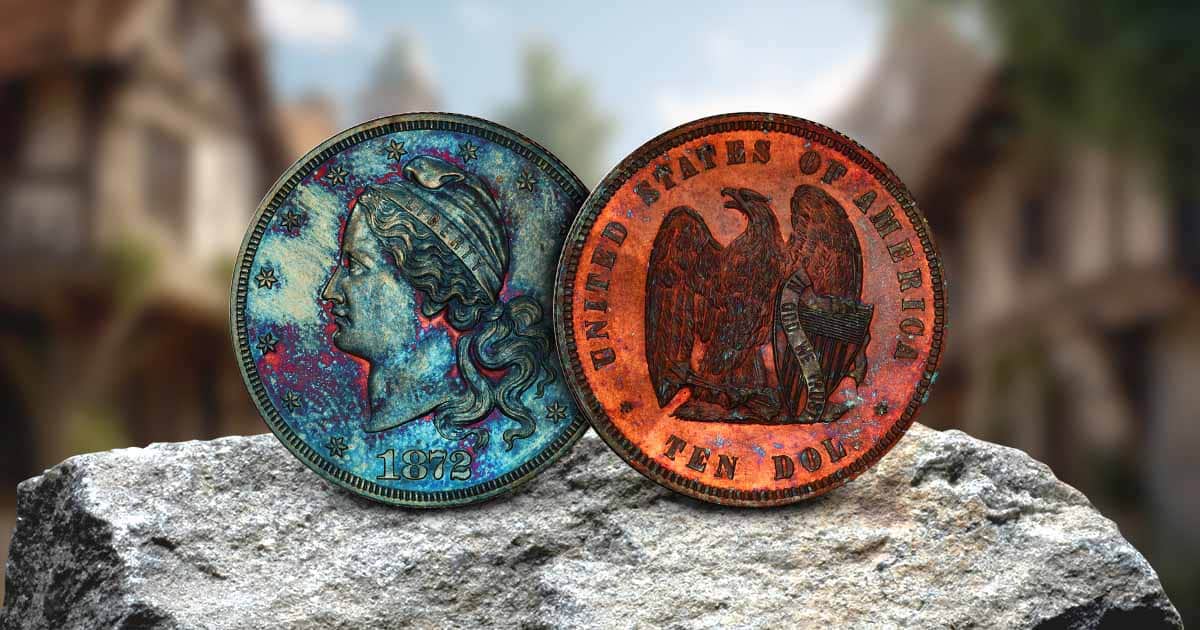
Pattern coins are experimental coins produced to evaluate a proposed design, test a new metal or production method, but have not yet been approved for issuance.
They are prototypes for evaluating minting and design elements before beginning full scale production.
They are usually struck off-metal or with a composition of lower value metals and are not intended for circulation.
American Pattern Coins and the Birth of the U.S. Mint
Shortly after the signing of the Declaration of Independence, there were discussions about currency and what sort of currency the fledgling nation should use.
At the behest of Congress in 1783, Superintendent of Finance Robert Morris began developing plans for a U.S. coin system. The first coins produced by the United States were Nova Constellatio patterns, and these patterns were produced to illustrate Morris’ plan.
By 1792, the U.S. Mint opened in Philadelphia and there were several pattern coins struck that year, including the half dime. There were about 1500 pattern coins produced in the decade that followed and many made it into circulation. There is not much information regarding the pattern coins produced between 1800 and 1846.
By 1846, more pattern coins were made in several categories, including off-metal strikes, transitional coins, fantasy pieces, and real pattern coins for proposed coinage.
An example of a pattern coin being used for proposed coinage is the half-union. The half union was an 1877 gold pattern coin with a $50 face value and there were only two half unions struck.
What is the Difference Between Pattern Coins and Specimen Coins?
Specimen coins struck are samples that represent a coin’s type or class, used for diplomatic and promotional purposes. They may be issued in uncirculated, proof, or matte finishes and are often of higher quality than circulation strikes.
Specimen coins display the detail and quality of a coin and are produced with a high degree of care to exhibit the Mint’s competence.
While a pattern coin is used to test new designs, a specimen coin is used for presentation or for archival purposes. Neither is intended for circulation.
It may help to think of a pattern coin as a first draft and a specimen coin as the cleaned essay, double spaced and neatly stapled.
What is the Difference Between Die Trails and Pattern Coins?
Die trials are used to test new coin designs and make sure that existing designs result in high quality coins. Die trials are struck from a die that is being evaluated.
The U.S. Mint uses steel blanks for die trials due to its strength, which allows it to be forced against other metals in the coining press.
They are used to test the quality of the die and ensure that it produces coins with acceptable quality. Die trials are typically made in smaller batches and are not used for circulation.
Meanwhile pattern coins are used as a test for a new design, replacement design, or another improvement to existing coinage.
Who Should Collect Pattern Coins?
Many collectors and numismatists collect and study pattern coins for their historical significance.
Pattern coins are great for collectors since they may feature designs that have not been adopted for circulation strikes. This can make them rare and valuable.





